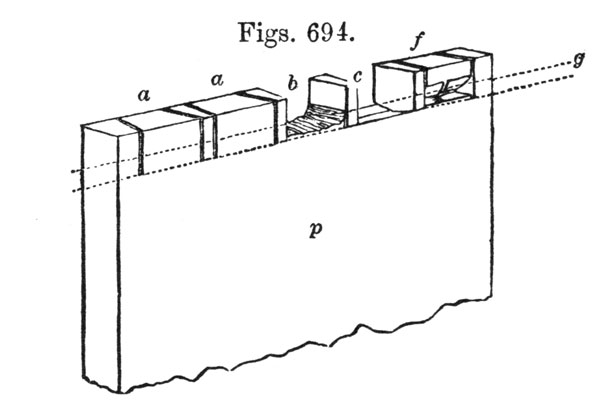We may receive a commission when you use our affiliate links. However, this does not impact our recommendations.
The alway-eagle-eyed Jeff Burks pointed out that I had already found an earlier reference to using a bow saw to saw out dovetail waste to the one I posted this morning.
Back in 2010, I mentioned that Charles Holtzapffel explains the technique in “Turning and Mechanical Manipulation…” (1856). Holtzapffel writes:
The wood between the dovetail pins is generally cut out with the bow or turning saw, leaving the space as at b, fig. 694; and the spaces are then pared out with the firmer chisel from opposite sides, as at c, the chisel being placed exactly on the gage lines, but slightly overhanging, so that the insides are cut hollow rather than square, to insure the exact contact at the inner and outer edges of the dovetails.
OK, so now we have a technique that is certifiably 158 years old. Do I hear anything older?
Thanks Jeff. Got to get back on the ginkoba.
— Christopher Schwarz
Here are some supplies and tools we find essential in our everyday work around the shop. We may receive a commission from sales referred by our links; however, we have carefully selected these products for their usefulness and quality.











Mr. Schwarz,
I’m sorry to post this question here, but i didn’t know where else to post it. In the video and the article of PWM #184 about the Roubo Workbench, you mention the use of a slow setting and flexible epoxy mixed with iron powder to fill the checks on the cherry slab. What is the brand-kind of the epoxy used?
Thanks.
Do you “hollow” the bottoms of your dovetails as Holtzapffel suggests?
Hello Chris. I was in the Louvre this fall in the Egyptian section. In a case were a couple of boxes with dovetail joints. So dovetails are at least 3000 years old. I do not know if they sawed out the waste.
How old is the oldest documented dovetail? Is there any evidence that it goes back to the classics? Is it as old as I sometimes feel?
Jb
When a writer uses language like “this practice is GENERALLY done this way…” then you know that the practice is in common use at the time it was written. Without internet or new fangled communication devises, it would take a while for a practice like this to become commonplace. It would be pretty reasonable to suggest that this practice had at least been around for 50 years prior to the writing by Holtzapffel.